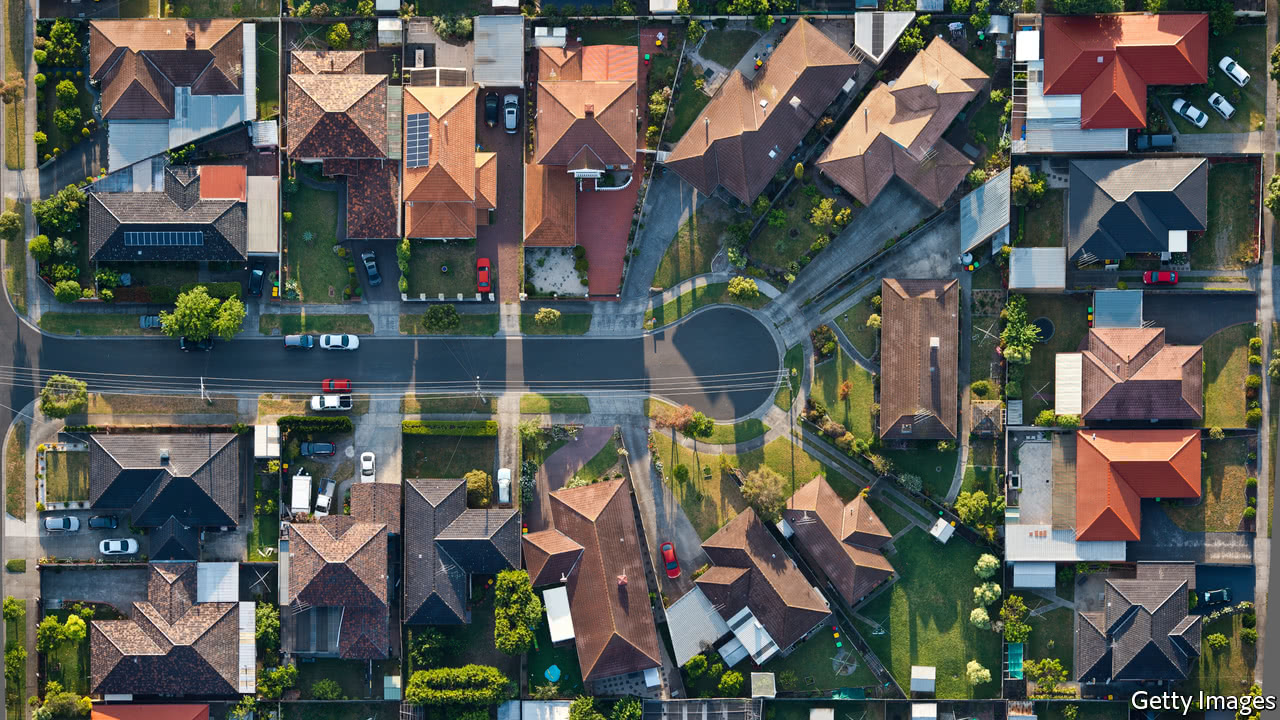
A “BUBBLE” is how the secretaries to the Treasury and the Australian Securities and Investments Commission have described it. A former head of the Liberal party thinks it a “crisis”. Even the Reserve Bank of Australia admits that there has been a “build-up of risks associated with the housing market”. Australia’s property prices are on fire, rising by an average of over 11% in the capitals of its states and territories over the past year. Most of that growth comes from Melbourne (pictured) and Sydney, which gained over 15% each. The average Sydneysider now shells out A$1.1m ($820,000) for a house—13 times the median national income. Five years ago that figure stood at A$659,000. Why are prices rising so quickly?
Speculators and foreign investors bear some of the responsibility. Tax breaks and popular interest-only loans have encouraged them to buy houses and leave them empty, and Australian property is seen as a safe haven for Chinese riches. But more can be explained by simple residential demand: Australia’s two biggest cities are growing faster than the national average thanks to migration, both internal and overseas. Sydney added 1m people in the 15 years from 2000, twice as fast as the previous million. Record-low interest rates and a strong economy have also spurred demand for mortgages. Despite a construction boom, developers struggled to keep up: in 2015, Sydney was short 50,000 dwellings, according to BIS Oxford Economics, a consultancy.
High house prices have made many families richer. But regulators are concerned that an overheating market now threatens financial stability. The problem is that wages have risen at a fraction of the pace of house prices, causing new home-owners to grow increasingly indebted. At over 120%, Australia has one of the world’s highest ratios of household debt to GDP. If salaries or the value of homes fall, many families—and the banks they owe—will be hurt. Moody’s, a ratings agency, recently warned that Australian households are leveraged to about the same degree as those in Ireland before its property market crashed in 2007.
Authorities are in a bind because not all cities are the same. As prices rise in Sydney and Melbourne, the cost of housing in Perth has fallen, along with its mining-dependent economy. Raising base rates would hurt parts of the country which are already faring less well. New Zealand responded to a similar challenge by demanding higher deposits for buyers in Auckland, where prices were outpacing the rest of the country. But Australia’s regulators prefer a broader approach: they have tried to curb speculation by telling banks to limit interest-only lending to 30% of new residential mortgages. The four big lenders recently raised rates on their loans. This month’s budget targeted foreign investors who leave their homes empty and set a limit on the number of properties sold to non-Australians, but ignored calls to abolish tax breaks. As new apartments come on the market, some analysts expect that growth will cool: Citibank predicts that property investment could fall by nearly 6% in 2018. For young Australians, that is not much consolation. A recent poll found that the majority of non-homeowners worry that they will never own a place.
www.economist.com
No hay comentarios.:
Publicar un comentario